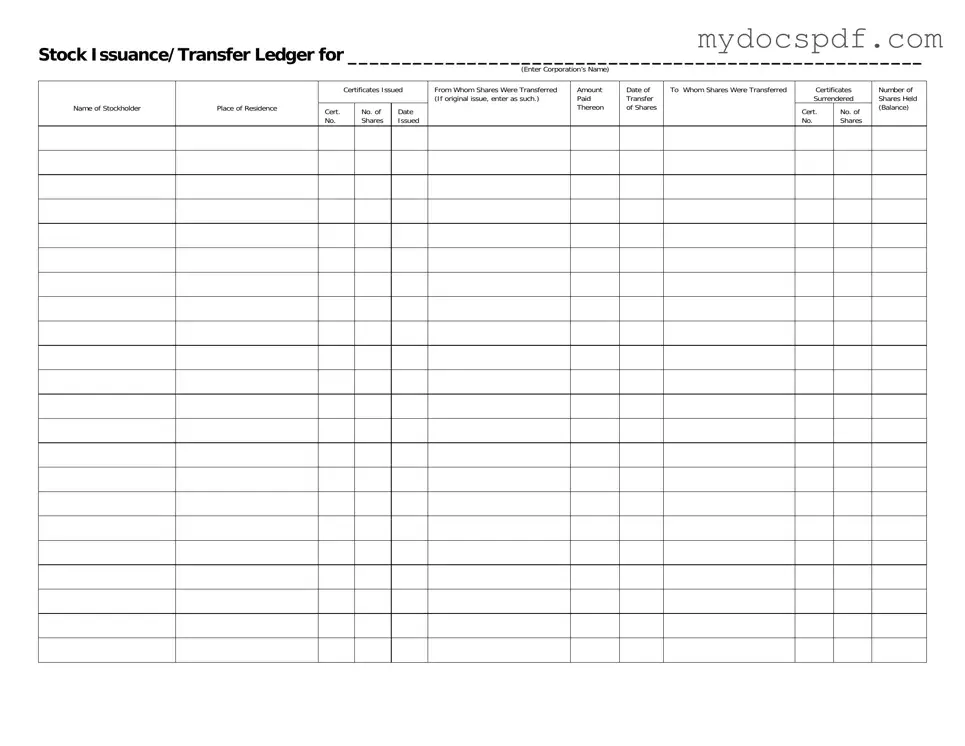When managing corporate stock, clarity and organization are paramount, and the Stock Transfer Ledger form plays a crucial role in achieving this. This essential document serves as a comprehensive record of stock issuance and transfers, ensuring that all transactions are meticulously documented. At the top of the form, you'll find a space to enter the corporation's name, establishing the context for all subsequent entries. Each stockholder's name and place of residence are captured, providing a clear link between individuals and their respective shares. The ledger meticulously tracks the certificates issued, including the certificate numbers and dates, which are vital for maintaining accurate records. Additionally, it details the number of shares issued, the parties involved in the transfer—whether it's an original issue or a subsequent transfer—and the amount paid for those shares. The form also includes a section for the date of transfer, ensuring that every transaction is time-stamped. Finally, it concludes with information about the certificates surrendered and the balance of shares held, offering a complete picture of stock ownership at any given moment. By utilizing the Stock Transfer Ledger form, corporations can enhance transparency and accountability in their stock management processes.

